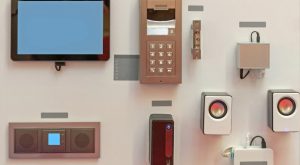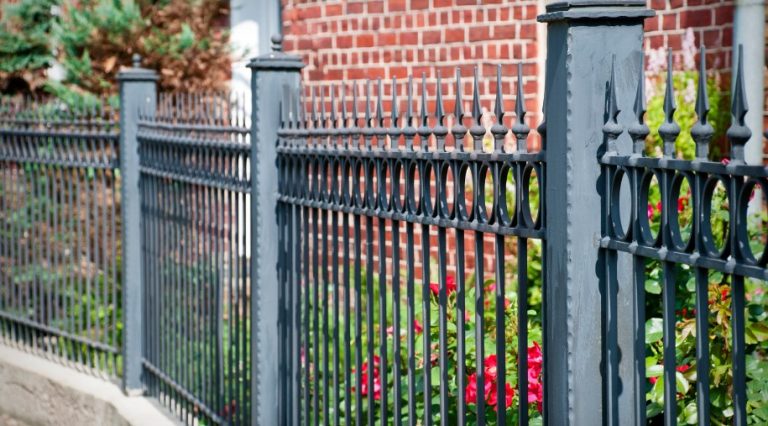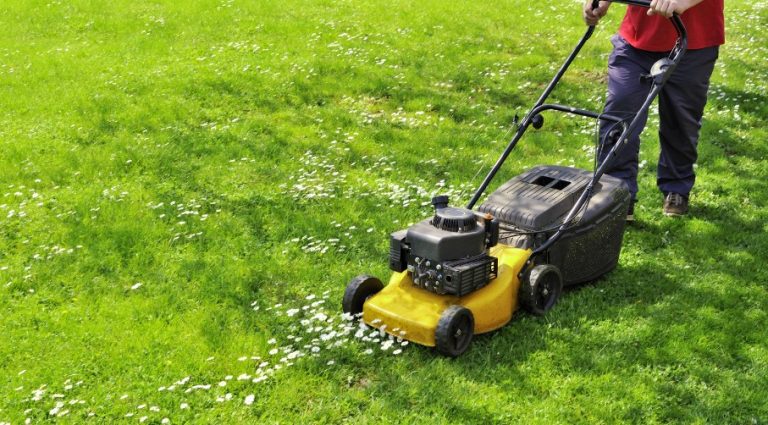Smart home technology is advancing rapidly, offering convenience, security, and efficiency. However, purchasing an outdated smart home gadget can lead to compatibility issues, security risks, and wasted money. With so many devices on the market, how can you ensure you’re making a future-proof investment?
This guide will help you avoid buying outdated smart home gadgets and choose technology that lasts.
Why Should You Avoid Buying Outdated Smart Home Gadgets?

Outdated smart home gadgets may appear to be a cost-effective option, but they often come with several drawbacks that outweigh any initial savings.
These issues range from security vulnerabilities and compatibility concerns to poor performance and lack of support. Here’s why investing in outdated smart devices can lead to problems in the long run.
1. Security Vulnerabilities and Lack of Updates
One of the biggest risks associated with outdated smart home gadgets is their vulnerability to cyber threats. Smart devices rely on frequent software updates to fix security flaws, but manufacturers eventually discontinue support for older models.
Without these updates, outdated gadgets become easy targets for hackers, who can exploit weaknesses to access your personal data, home network, and even connected security systems.
Smart locks, security cameras, and alarm systems are particularly at risk. If an outdated security device is breached, it could expose your home to unauthorised access.
A lack of updates also means that these devices may not support the latest encryption protocols, making your entire smart home network more susceptible to cyberattacks.
2. Compatibility Issues with New Devices
Smart home ecosystems are constantly evolving, with new devices introducing updated software and connectivity standards. If you own outdated smart home gadgets, they may struggle to integrate with newer platforms, voice assistants, or home automation systems.
For example, an old smart thermostat may not sync with the latest Google Home or Amazon Alexa updates, limiting your ability to control it through voice commands.
Similarly, older smart lighting systems may not work with advanced automation routines, making them less convenient to use. Over time, outdated devices can disrupt the seamless functionality of your smart home, forcing you to replace them sooner than expected.
3. Poor Performance and Limited Functionality
As technology advances, older devices tend to lag behind in terms of speed, efficiency, and features. Outdated smart home gadgets may struggle with slow response times, reduced connectivity range, or limited AI capabilities.
For example, an older smart speaker may take longer to process voice commands due to outdated hardware, reducing its responsiveness.
A first-generation smart doorbell may lack high-definition video quality, night vision, or two-way audio improvements found in newer models. These limitations result in a frustrating user experience and prevent you from making the most of modern smart home technology.
4. Higher Maintenance Costs and Shorter Lifespan
Outdated smart devices often require more maintenance and troubleshooting compared to newer models. As they age, their components may degrade, leading to connectivity issues, frequent disconnections, or even complete device failure.
Moreover, replacement parts for discontinued devices become harder to find, making repairs more expensive or impossible. Instead of constantly fixing an outdated gadget, upgrading to a newer model with better durability and longer support can be a more cost-effective solution in the long run.
5. Lack of Integration with New Smart Home Standards
The smart home industry is moving towards unified standards like Matter, designed to improve interoperability between different brands and devices. Outdated gadgets that do not support Matter or other evolving connectivity protocols may become obsolete as more manufacturers adopt these standards.
For instance, many new smart home devices rely on Wi-Fi 6, Zigbee, Z-Wave, or Thread for faster, more reliable communication. Older devices that only support previous-generation connectivity may experience slower response times, interference issues, or an inability to connect with future smart home products.
As smart homes become more interconnected, owning outdated gadgets could mean missing out on seamless automation and new technological advancements. Investing in future-proof smart devices ensures that your smart home remains functional and efficient for years to come.
What Are the Smart Home Gadgets We Need to Look for to Avoid Buying Outdated?

Choosing the right smart home gadgets requires careful consideration to ensure they remain useful and compatible for years to come. While some devices may seem appealing at first, they can quickly become outdated due to lack of support, poor integration, or outdated hardware. Here are the key smart home gadgets to focus on when making a purchase to avoid buying outdated technology.
1. Smart Speakers and Voice Assistants
Smart speakers like Amazon Echo, Google Nest, and Apple HomePod serve as central hubs for controlling other smart home devices. However, older models often lack advanced AI processing, improved microphones, and integration with new smart home ecosystems.
To avoid buying an outdated smart speaker, look for:
- Support for Matter: This ensures better compatibility with various smart home devices.
- Upgraded voice recognition technology: Newer models feature improved noise cancellation and faster response times.
- Long-term software support: Some older devices lose compatibility with newer updates over time.
2. Smart Security Cameras and Video Doorbells
Security cameras and video doorbells are essential for home protection, but outdated models may lack crucial features such as higher resolution, night vision, motion detection, and cloud storage options.
Key factors to consider when choosing a security camera:
- Resolution: Look for at least 1080p HD or 4K for clearer video quality.
- Cloud and local storage options: Some older models only support cloud storage, which may require ongoing subscriptions.
- AI-based motion detection: Newer cameras can differentiate between people, animals, and vehicles.
Avoid purchasing models that no longer receive security updates, as they can become a major vulnerability in your home network.
3. Smart Thermostats
Smart thermostats help regulate home temperature efficiently, but outdated models may not support newer features like AI learning, multi-room control, or integration with modern smart assistants.
A future-proof smart thermostat should include:
- Compatibility with multiple HVAC systems: Some older models only work with specific heating and cooling systems.
- Smart learning features: AI-driven adjustments based on your habits help save energy.
- Wireless connectivity updates: Older models may not support Wi-Fi 6 or newer wireless protocols, causing connectivity issues.
4. Smart Locks and Security Systems
An outdated smart lock or security system can compromise home safety. Many older smart locks have limited encryption standards, making them vulnerable to hacking.
When selecting a smart lock, look for:
- Biometric authentication: Fingerprint or facial recognition provides an extra layer of security.
- Integration with major smart home ecosystems: Ensure it works with Google Home, Alexa, and Apple HomeKit.
- Battery backup and emergency access options: Older models may fail during power outages, causing lockouts.
5. Smart Light Bulbs and Smart Plugs
While smart lighting may seem like a simple investment, outdated bulbs and plugs often lack energy-efficient technology, colour accuracy, and automation capabilities.
Choose smart bulbs and plugs with:
- Support for Matter and Zigbee: Ensures seamless integration with various smart home systems.
- Dimmable and colour-changing options: Older models may not support adjustable brightness or a wide range of colours.
- Energy-saving certifications: Modern smart bulbs consume less power and have a longer lifespan.
6. Smart Hubs and Controllers
Smart hubs serve as the backbone of a smart home, enabling communication between various devices. However, outdated hubs may lack support for new protocols like Matter, Zigbee, or Thread, making it difficult to integrate newer smart home products.
To avoid buying an outdated smart hub:
- Choose one with multiple wireless protocols: Ensure it supports Zigbee, Z-Wave, and Thread for long-term compatibility.
- Check for regular firmware updates: Manufacturers should provide consistent software support.
- Look for voice assistant integration: Some older hubs may not work with newer versions of Google Assistant or Alexa.
7. Smart Appliances (Refrigerators, Ovens, Washing Machines)
Many modern home appliances now come with smart features, but outdated models may not support remote access, app control, or integration with smart assistants.
Key features to look for in smart appliances:
- Wi-Fi and app connectivity: Ensure it can be controlled remotely via smartphone.
- Smart diagnostics: Some new models offer self-diagnosing capabilities for troubleshooting.
- Energy efficiency certifications: Older appliances may consume more power compared to newer, energy-efficient models.
How Can You Identify Outdated Smart Home Gadgets?
Identifying whether a smart home gadget is outdated requires some research and awareness of technological trends.
Manufacturer Support and Updates
One of the easiest ways to determine if a device is outdated is by checking the manufacturer’s support policy. Many companies provide regular firmware updates for their devices, but once a product is discontinued, updates may stop.
Checking the official website or forums for information on software updates can help determine if the device is still actively supported. If updates stopped more than two years ago, it is likely obsolete.
Discontinued or Obsolete Models
If a smart home product is heavily discounted, it might be a sign that the manufacturer is phasing it out. Many companies clear out old stock before discontinuing a product, and while the price may be attractive, the lack of future support makes it a risky purchase.
Online research can reveal whether a device has been replaced by a newer version. If a product has been on the market for more than five years without a hardware revision, it may not be worth investing in.
Hardware Limitations
Outdated smart home gadgets often lack support for modern connectivity standards. A device that only supports older Wi-Fi bands, such as 2.4 GHz without 5 GHz or Wi-Fi 6 compatibility, may struggle with reliability in high-traffic home networks.
Similarly, older models of smart speakers, cameras, or hubs may have limited processing power, which affects their responsiveness and integration with newer technology.
What Features Make a Smart Home Gadget Future-Proof?

When purchasing smart home technology, focusing on future-proof features can help ensure long-term functionality and value.
Regular Software and Security Updates
A device that receives frequent updates remains secure and compatible with evolving technology. Before buying, check how long the manufacturer commits to providing updates. Some brands guarantee updates for five years or more, making them a safer investment.
Smart home products that support over-the-air (OTA) updates ensure automatic security patches without user intervention, reducing the risk of vulnerabilities.
Compatibility with Evolving Smart Home Ecosystems
A future-proof smart home gadget should be compatible with major smart home platforms such as Amazon Alexa, Google Assistant, and Apple HomeKit. The introduction of the Matter standard aims to improve interoperability across different brands, making Matter-compatible devices a good investment.
Ensuring that a device works across multiple ecosystems helps avoid vendor lock-in, allowing flexibility when upgrading or expanding your smart home setup.
Support for New Wireless Connectivity Standards
Wireless technology is constantly improving, and outdated protocols can lead to slow performance and connectivity issues. Future-proof smart home devices should support:
- Wi-Fi 6: Improves network efficiency and device connectivity.
- Zigbee and Z-Wave: Essential for low-power smart home automation.
- Thread: A new mesh networking standard that enhances reliability and energy efficiency.
Choosing devices with these technologies ensures they remain compatible with upcoming smart home advancements.
How Do Smart Home Hubs Affect Device Longevity?
Smart home hubs play a crucial role in device integration and automation. Selecting a hub with long-term support can significantly impact the longevity of connected devices.
The Importance of Choosing a Reliable Smart Hub
A central hub manages communication between different smart home devices. Investing in a well-supported hub reduces the risk of devices becoming obsolete due to a lack of compatibility.
Brands with a strong history of software updates and ecosystem expansion, such as Samsung SmartThings, Hubitat, and Home Assistant, provide greater longevity compared to closed-system hubs.
Ensuring Cross-Platform Compatibility
Some hubs work only with specific brands, limiting future upgrade options. Open-standard hubs that support multiple communication protocols allow flexibility when adding new devices.
Hubs compatible with Matter, Zigbee, Z-Wave, and Thread ensure smooth integration with emerging technologies.
Future-Proofing Your Smart Home Setup
To avoid replacing a hub too soon, choose one that:
- Supports multiple smart home ecosystems
- Offers firmware updates and security patches
- Works with both Wi-Fi and low-power protocols like Zigbee and Thread
A well-chosen hub reduces the risk of devices becoming outdated prematurely.
Are Subscription-Based Smart Devices Worth It?
Some smart devices require a subscription for cloud storage, AI features, or remote access. While these services enhance functionality, they add long-term costs.
- The Pros and Cons of Subscription Models: Subscription-based devices often provide continuous updates, enhanced security, and premium features. However, relying on paid services means losing access to key functions if the subscription lapses. For instance, some smart security cameras require a paid plan for cloud storage and advanced motion detection. If the subscription ends, the device may lose essential capabilities, making it less effective.
- Hidden Costs and Long-Term Value: Before committing to a subscription-based device, calculate its total cost over five years. In some cases, a more expensive one-time purchase alternative with free local storage may be a better investment.
- Alternatives to Subscription-Based Smart Tech: Some manufacturers offer devices with built-in local storage or free cloud options. Choosing products with these features avoids ongoing fees while ensuring continuous functionality.
How Can You Make Smart Home Purchases That Last?

Future-proof smart home investments require careful planning and brand selection.
- Research Product Lifespans Before Buying: Look for devices with a proven track record of software updates and extended hardware support. Brands with frequent software improvements provide longer-lasting devices.
- Choose Brands with Strong Customer Support: Manufacturers known for long-term support and warranty coverage offer greater peace of mind. Research customer service reviews to gauge reliability before purchasing.
- Avoid Impulse Buys and Short-Lived Trends: New smart home gadgets often launch with hype but may lack long-term viability. Avoid niche products that depend on a single-use case, such as voice assistants without wider ecosystem support.
Conclusion
Avoiding outdated smart home gadgets requires careful research and forward-thinking choices. Prioritise future-proof features, compatibility, and long-term support to ensure your investment lasts.
By following this guide, you can build a smart home ecosystem that remains reliable, secure, and up-to-date for years to come.
FAQs
How can I tell if a smart home gadget is outdated?
Check if the manufacturer still provides software updates, whether the model has been discontinued, and if it lacks support for modern connectivity standards like Wi-Fi 6 or Matter.
What are the risks of using outdated smart home devices?
Outdated devices may have security vulnerabilities, reduced functionality, and compatibility issues with newer smart home ecosystems.
How often should I upgrade my smart home gadgets?
Most smart home devices last 5-7 years, but upgrading depends on security updates, software support, and technological advancements.
Are older smart home gadgets still usable?
Yes, but they may need workarounds, like third-party integrations or firmware modifications, to stay functional in a modern setup.
What smart home brands offer the best long-term support?
Brands like Google Nest, Amazon Echo, Apple HomeKit, Philips Hue, and Samsung SmartThings tend to provide regular updates and better longevity.
Should I avoid smart home devices that require a subscription?
It depends. Subscription-based devices often offer cloud storage and premium features, but they add ongoing costs. Look for alternatives with local storage if possible.
How can I ensure my smart home remains secure?
Regularly update firmware, use strong passwords, enable two-factor authentication, and invest in devices with end-to-end encryption for added security.






